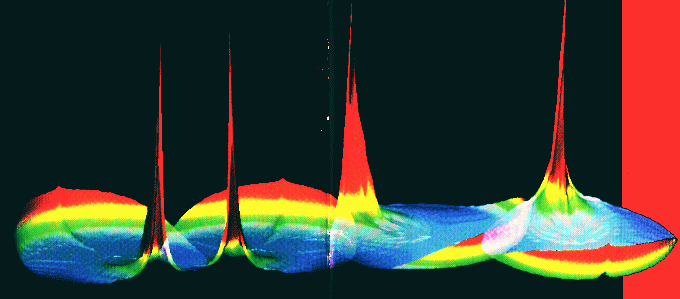This work is part of a collaboration with Coordenação de Programas de Pós-Graduação em Engenharia (COPPE), Brazil
Abstract
Total hemispherical absorption distributions for n-decane and water droplets irradiated by a blackbody under spherically symmetric conditions are used in the calculation of transient droplet heating and vaporization. The gas model used is based on the extended film theory. Three liquid-phase models have been extended to include thermal radiation absorption. The results show that radiation absorption can be as important as, or more important than, the choice of liquid-phase model. Based on the effective-conductivity model, two dimensionless parameters expressing the ratios of radiation absorption and gas-liquid heat transfer to liquid conductive and convective heat transfer are defined. It is shown that the first parameter determines the droplet heating regime. Over 200 numerical calculations using the effective-conductivity model and various initial and ambient conditions have been performed for water and n-decane droplets. It is shown that the ratio of the two dimensionless parameters evaluated at the initial time can be used to correlate and predict the radiation absorption influence on the droplet lifetime. All cases investigated correspond to the slow heating regime. Under the conditions analyzed, the non-uniformity of the radiation absorption has little effect on the overall droplet heating and vaporization process.
Publications
- P. L. C. Lage and R. H. Rangel, “Total Thermal Radiation Absorption by a Single Spherical Droplet,” J. Thermophysics and Heat Transfer, 7, 101-109, 1993.
- P. L. C. Lage and R. H. Rangel, “Single Droplet Vaporization Including Thermal Radiation Absorption,” J. Thermophysics and Heat Transfer, 7, 502-509, 1993.
- P. L. C. Lage, C. M. Hackenberg, and R. H. Rangel, “Non-Ideal Vaporization of Dilating Binary Droplets with Variable Properties,” Int. J. Heat Mass Transfer, 36, No.15, 3731-3741, 1993.
- P. L. C. Lage, C. M. Hackenberg, and R. H. Rangel, “Non-ideal Vaporization of Dilating Binary Droplets with Radiation Absorption,” Combustion and Flame, 101, 36-44, 1995.
